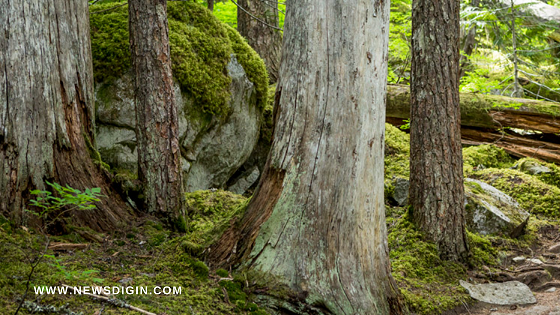
Cedar Bark Baskets And Native Trees Both Culturally Modified: My first astkw sqwá (cedar bark basket) was built in the highlands near Arlee, at Agnes Vandenberg’s camp, by a roaring stream.
Cedar Bark Baskets And Native Trees Both Culturally Modified

Personal Experience
The sound of wet inner bark being torn off rang in my ear as I peeled the bark away from the tree. My Tatáyaqn (Bitterroot Salish) identity and ancient ways of knowing were reaffirmed by the smells of newly peeled bark and cedar.
In Patlik Pierre’s opinion, we should always show our appreciation to the ced. To ensure that our harvests remain abundant.
we must always express our thanks by returning a portion of what we have received.
Reciprocate and connection of all living things in the natural world is a fundamental principle. ld.
Fact
It’s no surprise that western red cedar (Thuja plicata) is Montana’s tallest tree. Low-elevation forests in the Northwest United States are home to this species.
They can grow up to 150 feet tall in Montana. During the winter, big game feeds mostly on the leaves of these trees.
During the first 70-80 years of its life, Western red cedar reaches its peak productivity and can live for 500 to 1,000 years or more.
These boats were made from astkw (western red cedar), which was also used for cedar bark baskets, fishing nets and smudging by the Tatáyaqn.
In order for keeping pests and rodents away from your food, use cedar bark baskets, such as the one I constructed at Agnes’ camp.
Secured Food In Winter
These cedar bark baskets ensure that after the food is dried and placed inside. Therefore it will be secure for the cold winter months
Culturally changed trees, such as cedar basket trees. It can be recognised by the massive scars or missing bark strips left behind by the Salish peoples’ traditional usage of cedar bark baskets.
Indigenous people’s gathering practises are revealed via CMTs. The study of when and where CMT scars first formed can shed light on the ecological knowledge systems and culture of the Salish peoples on the west coast of North America.
Archeology
Confederated Salish and Kootenai Tribes member Dean Nicolai completed his graduate thesis on behavioural archaeology and Indigenous culture.
As well as how cedar basket trees assist to comprehending the cultural landscape. To investigate the CMTs. He used dendrochronology, which dates events and objects based on tree rings and growth patterns.
He discovered that a particular site had been used for cedar harvesting from 1962 to 1998. Further research found that the diameter of the tree and the width and length of the basket shared many commonalities.
Changed Studies Revealed
Studying culturally changed trees revealed where and when Tatáyaqn were gathering. As well as how much bark they harvested in a particular region.
To avoid depleting the resources, the Salish people would move their collecting sites every few years. This allowed the plants, berries, or roots that were harvested to heal and re-grow.
Also Read: